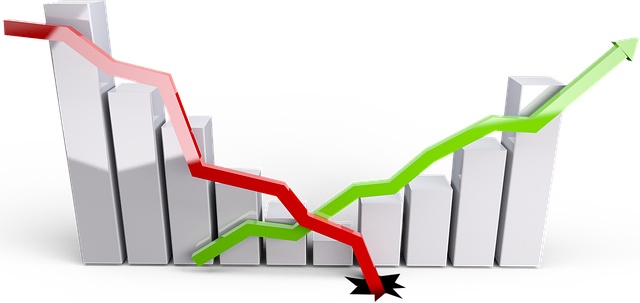 UK house prices remained flat in June, with the average price of a residential property dipping by 0.2% on a monthly basis, according to the latest Halifax House Price Index.
UK house prices remained flat in June, with the average price of a residential property dipping by 0.2% on a monthly basis, according to the latest Halifax House Price Index.
The annual rate of house price growth unchanged from last month at +1.6%. The typical UK home now costs £288,455, down slightly from £288,931 in May.
Northern Ireland recorded the strongest property price growth of any nation or region in the UK, rising by 4% on an annual basis in June, up from +3.3% the previous month. The average price of a property in the country is now £192,457.
In England, the steepest rate of house price inflation is found in the North West, up by +3.8% over the last year, now standing at £231,351.
House prices in Scotland also increased, with a typical property now costing £204,663, +1.6% more than the year before. In Wales, house prices grew annually by +2.7% to reach £220,197.
Eastern England was the only region or nation across the UK to register a decline in house prices over the last year, where they now average £328,747, down -0.9% in June on an annual basis.
London continues to have the most expensive property prices in the UK, now averaging £536,306, up
(+0.9%) compared to last year.
Amanda Bryden, head of mortgages, Halifax, said: “UK house prices stayed relatively flat for the third successive month in June, with the slight fall equivalent to less than £500 in cash terms. On an annual basis, house prices posted a seventh consecutive month of year-on-year growth, with the average UK property value now standing at £288,455.
“This continued stability in house prices – rising by just +0.4% so far this year – reflects a market that remains subdued, though overall activity has been recovering. For now it’s the shortage of available properties, rather than demand from buyers, that continues to underpin higher prices.
“Mortgage affordability is still the biggest challenge facing both homebuyers and those coming to the end of fixed-term deals. This issue is likely to be eased gradually, through a combination of lower interest rates, rising incomes, and more restrained growth in house prices.
“While in the short-term the housing market is delicately balanced and sensitive to the pace of change to Base Rate, based on our current expectations property prices are likely to rise modestly through the rest of this year and into 2025.”
Industry reaction:
Amy Reynolds, head of sales at Richmond estate agency Antony Roberts: “While prices have fallen again month-on month, it’s only the cream off the top of the high prices achieved in 2021 so it’s more of a correction in real terms. With higher borrowing costs, homeownership is out of reach for many. If landlords end up selling in larger numbers, worried about the potential of increased capital gains tax, we may see an influx of ex-rental properties to the market. This could lead to a fall in house prices but of course will also reduce rental stock which so many first-time buyers rely on while saving for a deposit.
“The new government must tackle planning issues, making local councils take a commercial view and less of a NIMBY approach to development that will house those most in need and boost the economy through employment of builders etc as the chain of suppliers used to build a new home is substantial.
“Fixing the property market will be hugely beneficial to the overall economy. With 16 housing ministers since 2010, the outgoing government hasn’t taken the property industry and its impact on the wider market seriously enough. Only time will tell whether the new government will do anything radical to reverse the current housing crisis.”
Myles Moloney, area sales manager at Chase Buchanan: “June’s property market remained positive and house hunters with larger equity and buying power pushed on to agree a sale as they felt the result of the election was forgone. Buyers who are only just starting their property search, however, have been slightly more cautious to observe how the manifestos could benefit them during their property buying journey – particularly first-time buyers.”
Nicky Stevenson, managing director at Fine & Country: “While the property market has had to contend with elevated interest rates and political uncertainty, it has held firm and is expected to see further buoyancy following the general election.
“Annual house price forecasts reflect a more positive outlook than they did in the beginning of the year, helped by headline inflation reaching its target 2.0%. Inflationary pressure easing and a bank rate cut imminently expected, has also positively spurred market sentiment. While the reduction in mortgage debt costs has been modest so far, the combination of better interest rate forecasts and a brighter economic outlook has provided more room for house price growth in the second half of the year.
“An improved outlook has led to consumer confidence increasing for the third month in a row in June. With confidence growing, some anticipate that we will see an uplift in sales activity. Properties are also now selling faster with the average time to sell dropping to 60 days in May from 78 days seen in January.”
Jeremy Leaf, north London estate agent: “The election definitely added to nervousness in the property market but slower-than-expected falls in mortgage rates weighed more heavily. We are hearing in our offices and on the ground that most buyers and sellers put moves on hold so we expect the resilient recovering of activity to remain.
“Looking forward, the rise in listings means prices will stay stable and the arrival of a new government will add certainty.”
Richard Vickery, Regional Director, Fulfords: “June proved a more subdued month for sales, largely because of the upcoming election and European Championship football tournament, however the outlook for July looks great. We are expecting a significant increase in activity post-election and therefore advising anyone selling that pricing is key in order to stand out.”
Iain McKenzie, CEO of The Guild of Property Professionals: “Despite high interest rates and the run up to the general election, the property market has remained resilient, which is reflected in the more optimistic house price forecasts for the remainder year. We are seeing confidence return to the market and expect it will continue to build momentum once the dust settles post election.
“While historically general elections have usually pushed the pause button on market activity, with many buyers adopting a wait-and-see approach, this election seems to have bucked the trend and those who have made the decision to move have forged ahead. The sustained demand has helped to support house prices.
“With headline inflation reaching its target of 2% in May, all eyes will be on the Bank of England to start cutting the rate, however, with services inflation still elevated, the Monetary Policy Committee will be careful not to cut the rate too soon. When we do see the first cut, it will alleviate some of the financial burden on many households and will inject further life into the property market.”
Sharon Donaldson, divisional managing director, Countrywide Scotland: “The Scottish property market has remained resilient, largely immune to the runes cast by election uncertainty. Demand remains significant with strong elements of competition driving premiums, particularly in the family homes sector. Activity in traditional hot-spots ranges from a mild simmer to a rolling boil, but supply issues are fuelling high buyer demand and driving house prices to premium levels.
Demand in areas boosted by postcode catchment for good public schooling, already a significant driver, is likely to experience significant pressure if the predicted application of VAT to the private school sector is implemented.
The speed of sales in Scotland continues to outperform the rest of the UK, particularly across the main towns and cities of the central belt, and the new build sector is also providing a significant draw to buyers attracted by the transparency of purchase, the chance to bespoke fit and for those who have been serially outbid in the resale market.
Anticipation of a fall in interest rates and softening of Scottish government rent restrictions are beginning to see a return of new landlords entering the buy-to-let sector. It’s predicted that yields will continue to grow, with ongoing high demand and multiple applications per property continuing for the foreseeable future.”
Russell Hill, board of management partner, William H Brown Norwich: “The local market in and around Norwich is still very active, despite the election. The last month has seen prices holding well and we’re seeing new sellers coming to the market with the hopes of completing the move this year. Meanwhile, buyers are still looking for a deal and the potential of a mortgage rate reduction is enticing them to register early and get out viewing. First-time buyer properties and family homes are a particularly busy part of the market with homes up to £400,000 gaining the most views online.”
Nathan Emerson CEO at Propertymark: “The announcement of a general election last month may have caused movement in the housing market to slow down, but now that we know we have a new government with an overall working majority, Propertymark remains optimistic that house prices will start to rise during the summer months, which is a naturally busy time for the housing market.
“Beforehand, it would be good for the new UK Government to clarify what its housing policies are going to be quickly, and a rumoured interest rate cut from the Bank of England hopefully becoming a reality in August would help trigger a substantial amount of confidence in the housing sector yet again.”
Graham Crocket, Area Director, Countrywide Scotland: “The property market on the Southside of Glasgow and surrounding towns continues to flourish in the face of fiscal and economic confidence, albeit the General Election has caused a tinge of nervousness. However, the Bank of England have maintained interest rates and it is widely anticipated that a cut is looming, which would of course be positive for the market. Second stepper, family homes outside the centre of Glasgow are currently fuelling the market, attracting the highest volume of enquiries, and achieving prices in excess of average values.”





